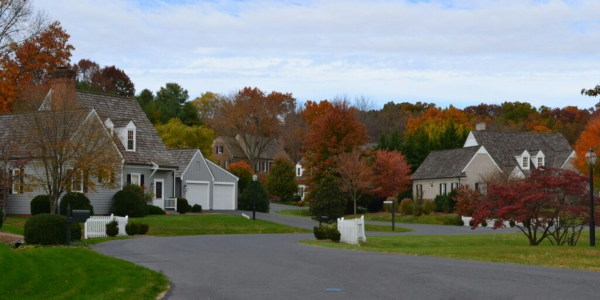Consider climate when choosing a downspout system

By Metal-Era®.
Understand the difference between open-face and closed-face downspout systems to choose the best solution for mitigating water damage on the roof.
In the springtime, the weather can vary dramatically, cycling between freezing and thawing, particularly in colder climates. Metal-Era® believes downspouts are a critical part of a roofing system, especially when freezing cycles can cause ice formations that block the passage of runoff. When deciding between an open-face downspout and a closed-face downspout, considering climate is necessary. While closed-face downspouts are often used in areas prone to heavy rainfall with a higher risk of debris accumulation, an open-face downspout may be a more practical design to help minimize ice damming and allow the effective channeling of water away from the roof and foundation of a building.
As roof runoff pouring into gutters and scupper heads freezes on colder days, ice formations can occur within the downspout tube. During the cycle of freezing and thawing, a solid ice formation may be created within the downspout tube that fully blocks the passage of runoff, much like a clogged kitchen sink drain. When this occurs within an enclosed downspout, trapped runoff backs up into the gutters or scupper heads, eventually backing up onto the roof. This back-up can create pools of water and ice on the roof, causing many potential issues related to damage due to improper drainage.
Expansion and contraction as well as the weight of the of the ice block within the downspout can also cause damage to the downspout itself, creating rips in the material, stress on the downspout and gutter or scupper head due to the weight of the ice block, or even failure of mechanical fasteners at the joints and outlets, thus causing the downspout system to fall.
Utilizing an open face (three-sided) downspout design minimizes the chances of ice damming within the tube as it is exposed to the sun and salt (lower region near parking lots). Should any sort of ice formation occur, runoff still has a route around the ice block, preventing back-up into the gutters or scupper heads and onto the roof.
The National Roofing Contractors Association (NRCA) provides a short recommendation on this subject in their Roofing and Waterproofing Manual - 5th edition, page 500, 2.3.4 Downspouts., stating, “Three sided downspouts are suggested in regions where ice formations may block and/or damage fully enclosed downspouts.” Metal-Era supplies both open and closed faced versions of downspouts that can be sized to meet specific project requirements.
Original article source: Metal-Era
Learn more about Metal-Era in their Coffee Shop Directory or visit www.metalera.com.























Comments
Leave a Reply
Have an account? Login to leave a comment!
Sign In